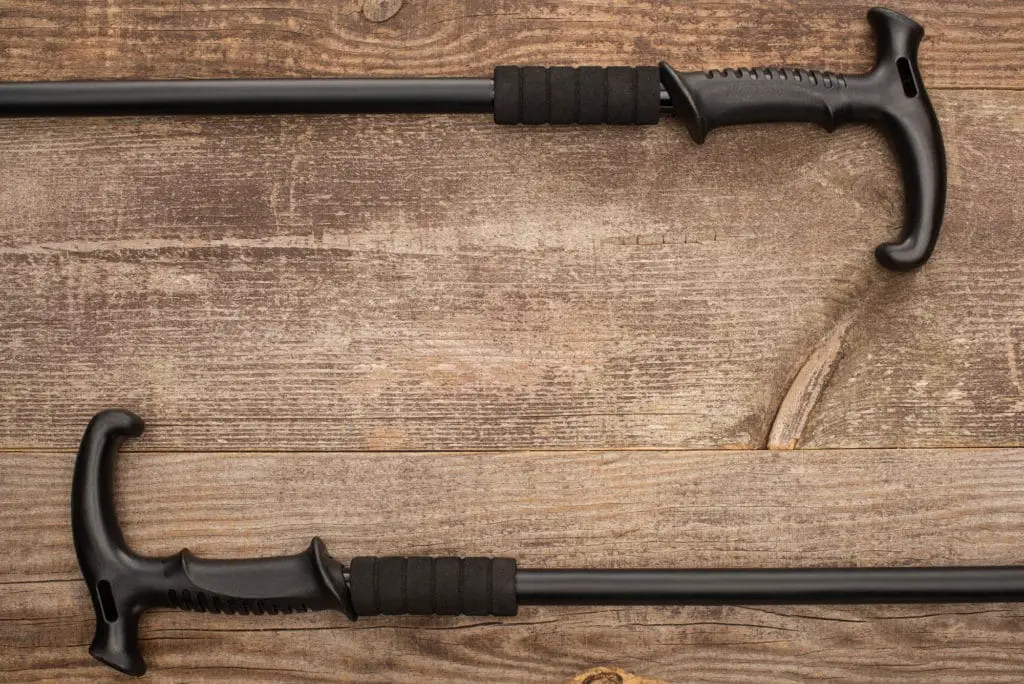Experienced hikers know that a good hiking pole can help make a hike more enjoyable. For one, it helps to take the load off one’s knees while going downhill and secondly, it acts as a steady aid when navigating uneven trails or while going uphill.
But here’s a question that most hikers ask- Can hiking poles be carried while flying? According to TSA, yes, hiking poles are allowed but you would need to check them in first. Packing them in your carry-on for the flight is not allowed.
So, what is the best and safest way to pack trekking poles for a journey by flight?
Table of Contents
How To Pack Trekking Poles
Hiking poles can be safely packed in the luggage that is going to be checked in. If they are packed carefully, you don’t have to worry about the possibility of them being damaged. Here’s the four best tips to pack your hiking poles safely before placing them in the luggage to be checked in:
Purchase a Carrying Case
If you have poles that cannot be adjusted, then the ideal thing to do is to carry them just as they are in the case that they came in.
Or, if you check online, you may be able to find a carrying case that correctly matches the length and width of the poles. I recommend buying a hard case which will do a better job at protecting the poles than a soft cover case.
In fact, non-collapsible hiking poles can also be checked in separately from the rest of your luggage but then the likelihood of losing them is also higher.
Shorten Extendable Poles
The latest models that are available these days are extendable and can be lengthened or shortened to suit one’s height and the hiking terrain. I recommend getting the poles which can be latched for extra security.
Some poles may also have joints that can be twisted which typically need to be unscrewed if you want to shorten the length.
Most reputable companies have an instruction manual as well which gives directions on how to shorten and lengthen the poles accordingly.
Protect The Tips
The ends of the poles tend to be sharp and if you are placing them in your luggage, covering up this exposed end is the right thing to do.
One of the most cost-effective ways to do it is by covering the ends tightly with thick woolen socks. This acts as the first layer of insulation.
Next, cover this again with two woolen sweaters and fasten the entire pole with rubber bands so that the sweaters don’t slip. Do remember that the ends of the pole are sharp so if you plan on using thinner fabric, you would need more layers to act as a protective cover.
Pack it Properly
While placing the poles in your luggage, make sure that the poles are well covered or insulated on all sides.
I recommend bunching up a few sweaters or old shirts and covering the area around the poles with those. This will minimize the possibility of the poles damaging any of your other clothes or stuff.
Packing your bag fully to avoid any loose space and gaps inside the bag, helps to ensure that the poles stay ‘locked’ in position and won’t move around, thereby reducing the chance of them getting bent.
Related Article: Can You Bring a Tent on a Plane?
Does TSA Allow Hiking Poles as Carry-ons?
The TSA website states very clearly that hiking poles are not allowed in-flight but that they can be checked in. The rule applies to hiking poles that can be retracted and packed in a bag as well. The website clearly states that the final decision rests with the TSA officer at the checkpoint.
Types Of Hiking Poles

There are many types of hiking poles and here are 3 points you need you keep in mind while choosing one for yourself:
- You need to decide between purchasing a pair or just a single one.
- The length is important because ideally there should be a 90-degree bend at the elbow when the pole touches the ground.
- Consider the features that are important to you- such as adjustability, type of grip, durability, type of locking mechanism, weight and shock absorption.
Double Vs Single
Hiking poles are usually sold as a pair or as a single walking staff. When used in tandem, the poles help to distribute weight more evenly and can greatly help in taking the stress off your knees especially when hiking uphill. Such poles usually have adjustable length and springs to absorb any impact.
A walking staff on the other hand is ideal for beginners and for hiking on flat terrain as the chances of breakage are low. In case, you plan on enjoying a hiking trip for a day where carrying a backpack or extra weight is not needed, this is the ideal pole to purchase. Such staffs are also adjustable and may even have an built-in camera in more expensive models.
Shaft Material
Hiking poles are usually made of aluminum or carbon fiber. With regard to the weight, carbon fiber poles are definitely lighter but are more susceptible to breaking if a lot of force is used.
Aluminum poles, on the other hand, are heavier but are much more affordable and when extra force is used may bend and not break. Poles that are a combination of both materials are also available.
After you decide on the material, there are three designs that are most common – telescoping, folding, and fixed.
Telescoping
The entire pole can be taken apart and it is a locking mechanism that keeps each section fixed to the next. The plus point is that since the whole pole can be further broken down into smaller sections, they don’t take up much space when packed in a bag. If you plan to check in a small bag, then this is the right pole to purchase.
Folding
These trekking poles resemble a modern-day walking stick and have three sections that can be folded to around 1/3rd of the total length. These sections are held together by a cord and when unfolded, the sections can be locked in place to create a single pole.
In comparison to telescoping models, folding poles are definitely lighter but the length cannot be adjusted further.
Fixed
Fixed poles are best used on flat terrains where the chances of injury is lower. This type of pole cannot be folded or adjusted which makes it a purchase that isn’t practical if you are planning to check in your hiking poles at the airport.

